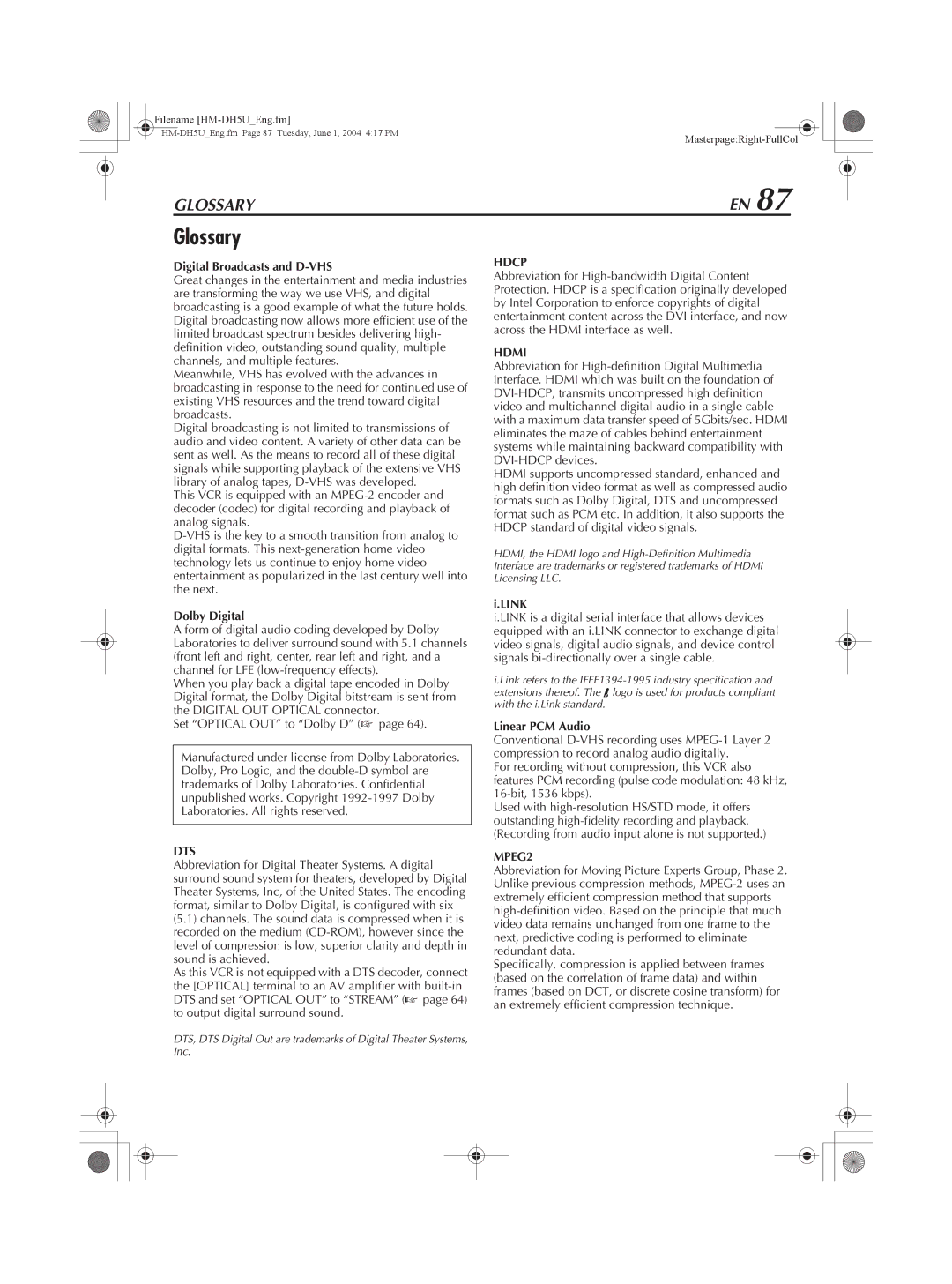
Filename
|
GLOSSARY | EN 87 |
Glossary
Digital Broadcasts and D-VHS
Great changes in the entertainment and media industries are transforming the way we use VHS, and digital broadcasting is a good example of what the future holds. Digital broadcasting now allows more efficient use of the limited broadcast spectrum besides delivering high- definition video, outstanding sound quality, multiple channels, and multiple features.
Meanwhile, VHS has evolved with the advances in broadcasting in response to the need for continued use of existing VHS resources and the trend toward digital broadcasts.
Digital broadcasting is not limited to transmissions of audio and video content. A variety of other data can be sent as well. As the means to record all of these digital signals while supporting playback of the extensive VHS library of analog tapes,
This VCR is equipped with an
Dolby Digital
A form of digital audio coding developed by Dolby Laboratories to deliver surround sound with 5.1 channels (front left and right, center, rear left and right, and a channel for LFE
When you play back a digital tape encoded in Dolby Digital format, the Dolby Digital bitstream is sent from the DIGITAL OUT OPTICAL connector.
Set “OPTICAL OUT” to “Dolby D” (A page 64).
Manufactured under license from Dolby Laboratories. Dolby, Pro Logic, and the
HDCP
Abbreviation for
HDMI
Abbreviation for
HDMI supports uncompressed standard, enhanced and high definition video format as well as compressed audio formats such as Dolby Digital, DTS and uncompressed format such as PCM etc. In addition, it also supports the HDCP standard of digital video signals.
HDMI, the HDMI logo and
i.LINK
i.LINK is a digital serial interface that allows devices equipped with an i.LINK connector to exchange digital video signals, digital audio signals, and device control signals
i.Link refers to the
Linear PCM Audio
Conventional
For recording without compression, this VCR also features PCM recording (pulse code modulation: 48 kHz,
Used with
DTS
Abbreviation for Digital Theater Systems. A digital surround sound system for theaters, developed by Digital Theater Systems, Inc, of the United States. The encoding format, similar to Dolby Digital, is configured with six (5.1) channels. The sound data is compressed when it is recorded on the medium
As this VCR is not equipped with a DTS decoder, connect the [OPTICAL] terminal to an AV amplifier with
MPEG2
Abbreviation for Moving Picture Experts Group, Phase 2. Unlike previous compression methods,
Specifically, compression is applied between frames (based on the correlation of frame data) and within frames (based on DCT, or discrete cosine transform) for an extremely efficient compression technique.
DTS, DTS Digital Out are trademarks of Digital Theater Systems, Inc.
